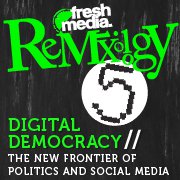This book was awesome. I’m always arguing for the humanities (more specifically English departments [even more specifically rhetoric]) to get involved with physics in order to start moving toward reference metaphors that get us beyond Newtonian laws of physics. We spend SO much time coming up against these metaphors in terms of gravity, in terms of time, and in terms of materiality, and until we’re able to take advantage of the three re-inventions of physics (relativistic, quantum, and astronomical) then we’re never going to employ the full power of what the humanities are able to teach us about our everyday experience.
Virilio totally goes there. =)
While Virilio covers a ton of ground, his main argument comes back to the way the concept of time and space is mutating into privileging of only time, which is to say that we are becoming less interested in the “here and now” and more interested in in the “now.” This focus on speed, Virilio argues, ultimately throws our perception of reality into a type of conceptual centrifuge in which the world will lose its “color.” In this grey reality we lose a handle on our relationship to the light (the unfocused light of the sun and electricity) which has for so long structured our considerations of reality, meaning, and matter. The faster we go, the closer we get to the generalized accident, which is to say a complete loss of the physical at the hands of an abstracted electromagnetic “radiation.” Though it would take some time to outline the nuances of Virilio’s argument, I will instead focus on the key losses/wreckage of this accident.
The first kind of loss or problem comes with the idea of a generalized period of time in which the world is always present with itself. While our conception of time used to be derived from sunlight, and we measure time according to the earth’s rotation in relation to the sun, the ability for the world to be immediately present through the use of screens means that we are evaporating that aspect, that time itself becomes one long course of presence. To this extent Einstein and Virilio clarify our move from a chronology (first, second, third) to a dromology (underexposed to overexposed) in order to consider the way time is always with us in the immediate moment.
Virilio’s warning about this disconnect from time is that the world becomes wrapped in a certain kind of intertia of the City to the extreme, where the “haves” and the “have nots” live in complete difference, as those that have the technology would technically live in “real time” and those in third world countries would technically always be “behind.” This is a type of re-presentation of the pitfalls of the urban environment, but in a virtual space rather than in a physical space. Interestingly enough, Virilio points to how the physical cities themselves, in that they contain the majority of the working class, will become an obsolete idea as “presence” ceases to be a function of location as much as it is a function of speed.
Likewise, Virilio examines the implications for “placeless-ness” not only in terms of the astronomic or the development of urban planning, but goes as far as outlining the implications of this shift all the way back to the (human?) animal body. There are 3 chapters to this extent, one on proximity, one on the place of the optical unit, and one on sexuality and perversion. While the last two were very cool, the first was the one that I had thought the least about in terms of the idea of speed and matter, and thus it’s the one that I’m going to relate to here.
In his discussion of proximity, Virilio considers the way the mechanical becomes not only an extension of the body, but a transplant for the body’s very nature. He looks into how this abstracted discussion of light and time comes back to the way we see the body as something that needs to be always present to itself. Furthermore, the notion of the body in terms of its inside and outside properties blend into one mode of simply existing, and keeps us from the relationships of movement which have become so central to human existence. The use of Newton’s laws has brought us to try to define (kill) the physical environment, but Einstein relativity leads us all the way down to the control of the microphysical properties, which is to say the very construction of molecules as a character of our organic function.
To bring this level of control into the body is to consider override the relationship between thought and action, and to remove the relationship between movement and the mind in an important capacity. Our understanding of our subjectivity, whereby we might see our arms move and think “I made those arms move” (without stumbling in the slightest across the moment of questioning the I) changes to the way that the machine has caused my our arms to move, or our blood to flow, or our temperature to regulate. And this move, then, relates to how we remove ourselves (distance ourselves?) from the mental powers of action.
Questions:
Images @:
http://youtu.be/ESc8V1-OTGo
http://worldofelfi.files.wordpress.com/2011/02/funny-pictures-the-internet-is-a-series-of-tubes2.jpg
http://images.cheezburger.com/completestore/2010/11/18/26700c7c-3554-439f-9059-958cddb2bfcc.jpg
























